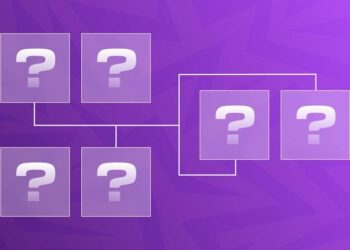The digital gaming world is witnessing an unprecedented transformation, fundamentally reshaped by the pioneering introduction and application of Unity WebGL technology. This progressive framework stands as a beacon of innovation for developers eager to redefine the gaming landscape. This exploration aims to dissect the multifaceted benefits, address the complex challenges, and outline the practical applications of Unity WebGL, illuminating its substantial influence in altering the traditional paradigms of interactive entertainment as we know it, across continents and cultures.
A Comprehensive Exploration of Unity WebGL
Unity WebGL represents a monumental leap in the evolution of gaming technology, functioning as a robust, browser-based solution that revolutionizes the deployment of Unity-engineered games onto web browsers without the dependency on external plugins.
This avant-garde technology capitalizes on the vast capabilities of the WebGL graphics API, enabling game developers to significantly broaden the accessibility and reach of their innovative projects. It guarantees an uninterrupted and cohesive gaming experience across a multitude of platforms and devices, thus catalyzing a transformative change particularly within the realm of Unity for Web Games, seamlessly melding intricate game development processes with the boundless possibilities offered by modern web browsers.
The Multidimensional Advantages of Unity WebGL
Expanding accessibility and global connectivity
The advent of Unity WebGL has effectively demolished the conventional barriers that previously hindered game accessibility, enabling instant, plugin-free playability across various devices and web browsers. This global reach is particularly revolutionary for Unity for Web Games, democratizing access to gaming and enabling developers to penetrate markets previously beyond the reach of traditional, device-bound gaming applications.
Elevating visuals and gameplay dynamics
Unity WebGL eliminates the historical trade-off between web compatibility and high-fidelity graphics.
This development allows game creators to deliver experiences that boast console-quality graphics and seamless gameplay mechanics directly within a web browser environment. This is a significant boon for the sphere of custom game development, where the freedom to manifest complex, detailed, and visually stunning visions without compromising on performance is now a tangible reality.
Streamlining the game development lifecycle
With the integration of Unity WebGL, the entire lifecycle from game development to public release is markedly accelerated. 
Overcoming Challenges with Innovative Approaches
The transition to Unity WebGL, while having its advantages, also presents its unique set of challenges. These include optimizing for diverse web environments and capturing and maintaining user engagement in an online space notorious for fleeting attention spans. However, these obstacles offer an opportunity for growth and innovation. Through strategic asset management, meticulous optimization techniques, and a focus on user-centric design, developers can effectively navigate these challenges, setting the stage for the successful launch and reception of their games.
Learning from Success: Case Studies and Insights
The transformative potential of Unity WebGL is vividly demonstrated through a plethora of success stories spanning the breadth of Unity for Web Games and extending into broader gaming ventures. These real-world examples provide a rich source of insights, showcasing effective strategies for overcoming technical challenges, engaging users, and creating memorable gaming experiences. By analyzing these case studies, developers can gain a deeper understanding of the practical applications of Unity WebGL and how it can be leveraged to achieve unprecedented success in the gaming industry.
Journeying Through the Unity WebGL Landscape
Embarking on the Unity WebGL journey opens up a world rich in educational resources, community support, and professional development opportunities. Unity itself offers an extensive suite of guides and tutorials, complemented by active community forums and expert-led workshops and webinars.

This ecosystem supports both seasoned developers and newcomers alike, providing a fertile ground for learning, innovation, and collaboration.
Conclusion: Pioneering the Future of Game Development with Unity WebGL
As we stand on the cusp of a new era in digital entertainment, Unity WebGL emerges as more than just a technological tool—it serves as a catalyst for change, propelling the evolution of custom game development and expanding the possibilities of Unity for Web Games.
By embracing this advanced technology, developers are not only unlocking new dimensions of creativity and audience engagement but also contributing to the burgeoning landscape of accessible, immersive, and interactive web-based gaming experiences. The journey into the world of Unity WebGL is not merely about adapting to a new platform but about pioneering the future of the gaming industry, setting new benchmarks for interactive experiences, and shaping the next generation of digital entertainment.



















